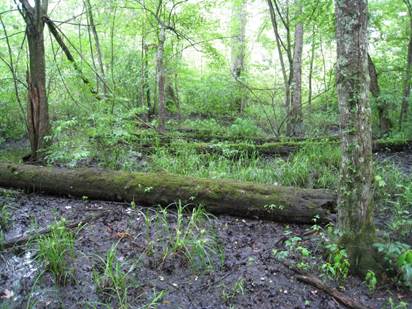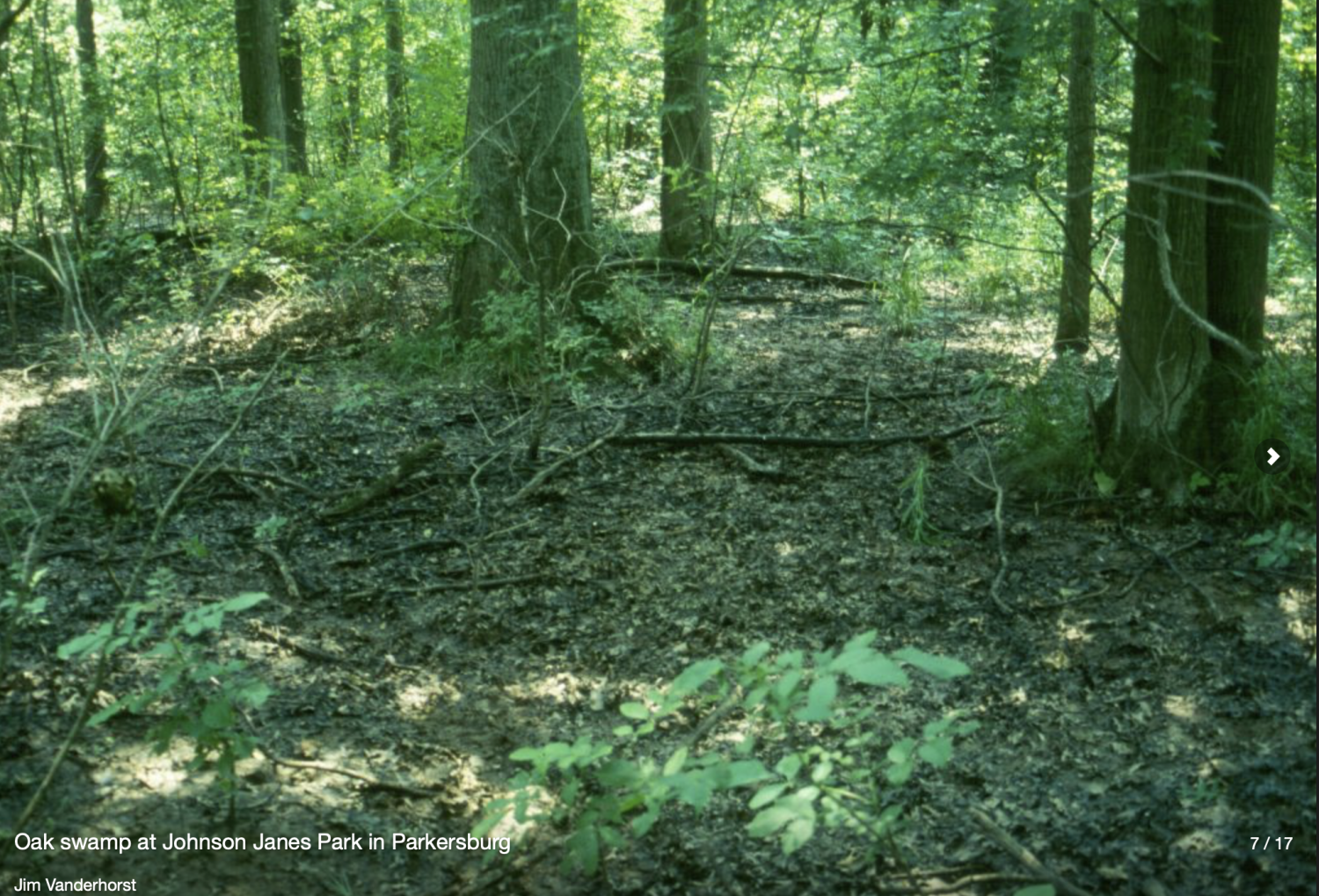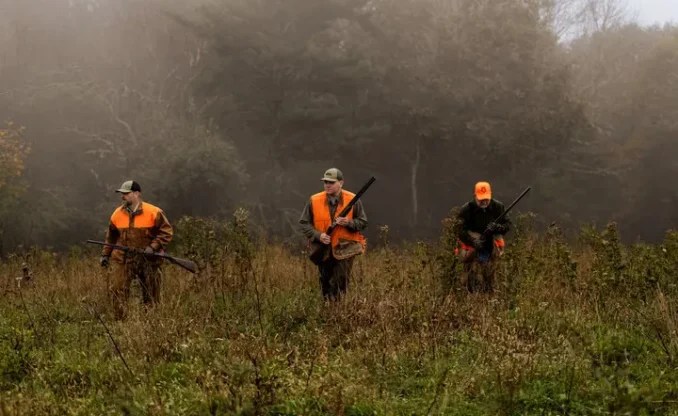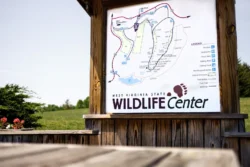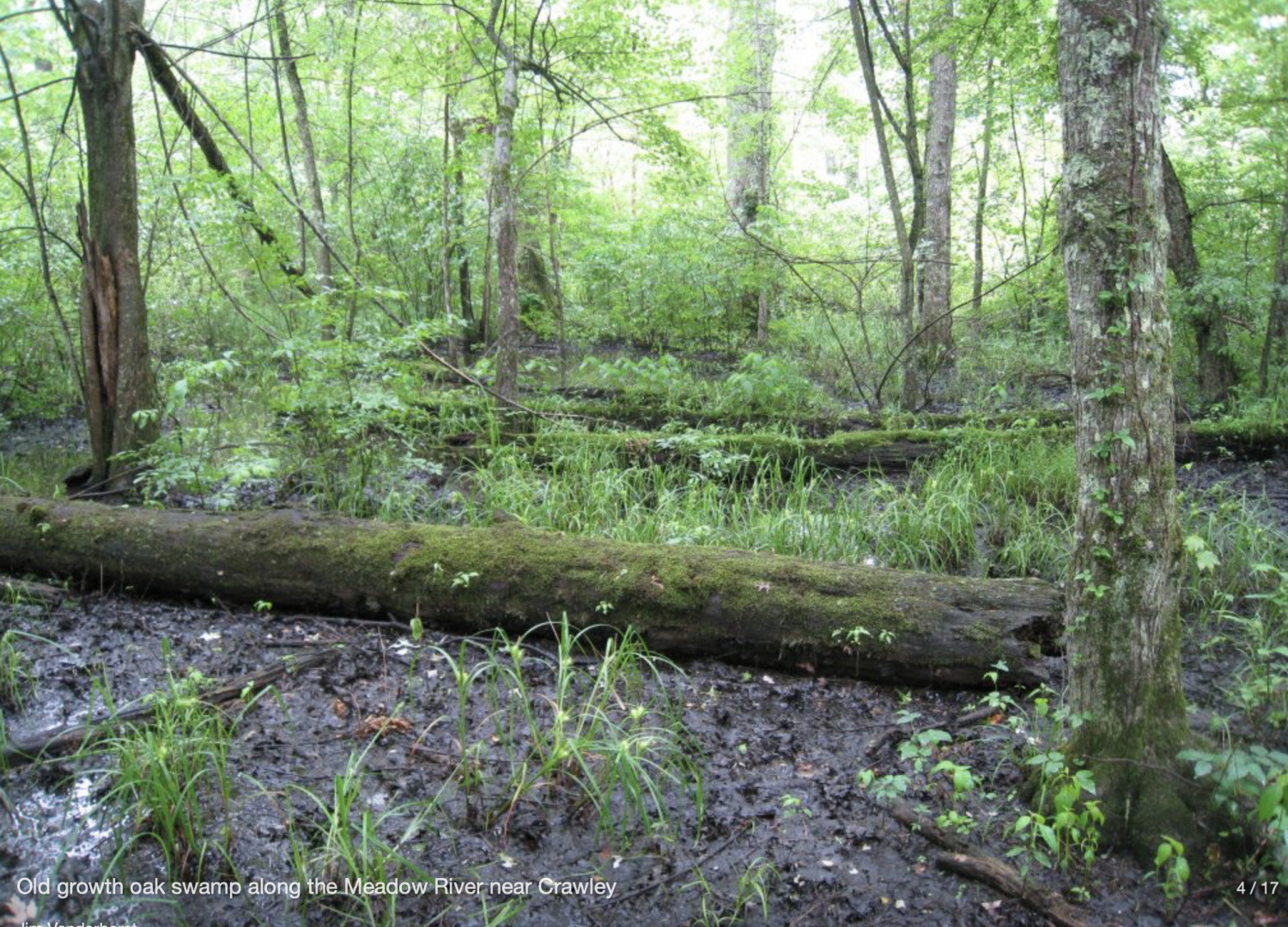Bottomland Oak Swamps
Most native oaks (Quercus spp.) in West Virginia are adapted to relatively dry upland sites, but a couple of species grow wild only in swamps (forested wetlands). These oak swamps are similar to forested wetlands that occur elsewhere in the Midwest and Mid-Atlantic but they are among the rarest wetland types in our state. Even in the past, these swamps were not common in West Virginia, and because they occur on flat, potentially productive land their area has been greatly reduced by drainage and development for human uses.
Ecological Description
Bottomland oak swamps are forested wetlands dominated by, or with a significant component of pin oak (Quercus palustris) and/or swamp white oak (Quercus bicolor) in the canopy. Additional canopy trees include red maple (Acer rubrum), black gum (Nyssa sylvatica), silver maple (Acer saccharinum), white ash (Fraxinus americana), shagbark hickory (Carya ovata), black ash (Fraxinus nigra), and sweet gum (Liquidambar styraciflua). The woody vine poison ivy (Toxicodendron radicans) is often abundant on the ground and climbing into the canopy. Shrub layers are often well developed and may include common winterberry (Ilex verticillata), muscletree (Carpinus caroliniana), silky dogwood (Cornus amomum), northern spicebush (Lindera benzoin), and smooth alder (Alnus serrulata). Herb layers are characterized by obligate hydrophytes, especially grasses and sedges, including false nettle (Boehmeria cylindrica), sweet woodreed (Cinna arundinacea), greater bladder sedge (Carex intumescens), bugleweed (Lycopus uniflorus), white turtlehead (Chelone glabra), swamp buttercup (Ranunculus hispidus. var. nitidus), brome-like sedge (Carex bromoides), rice cutgrass (Leersia oryzoides), fowl mannagrass (Glyceria striata ), hop sedge (Carex lupulina), and many others.
Bottomland oak swamps mostly occur in flat bottomlands along large rivers at low to middle elevations (450-2,700 ft.). One stand is known in a different topographic setting, on a sandstone ridge around a sinkhole depression pond. Soils are acidic and have clay subsurface horizons which impede drainage. Sites are regularly inundated by low energy flooding, seepage, and precipitation. They are generally wettest in winter and spring and driest in late summer and fall. Hydrology evidence includes stained tree trunks, standing water, and mud flats.
Animals that need these habitats
Seasonal standing water provides important habitat for amphibians, including salamanders and frogs. The rare smallmouth salamander (Ambystoma texanum) lives in oak swamps along the Ohio River. Three burrowing crayfish species (Cambarus pauleyi, Fallicambarus fodiens, and Procambarus acutus) are specialists in these habitats in different parts of the state. Rusty blackbirds (Euphagus carolinus) congregate in oak swamps. Acorns are important food sources for many mammals and birds, including squirrels and ducks.
Distribution
Bottomland Oak Swamps are known in the floodplains of several rivers across the state, including the Ohio, Kanawha, Tygart Valley, Greenbrier, Meadow, and Potomac Rivers. Total area of Bottomland Oak Swamps known in West Virginia may be less than 2,500 acres.
Places to see and visit
Johnson T. Janes Park, Meadow River Wildlife Management Area, Winfield Swamp
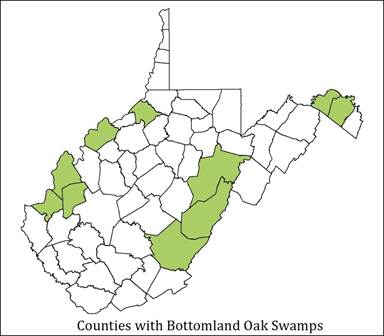
Conservation issues
Many sites were cleared, then drained or filled for agriculture, industry, or other human development. Secondary forests have returned in some areas where drainage has failed but, depending on the interval without forest and distance from seed sources, the floristic composition is likely to be very different from the original forest. Oak seeds have limited dormancy and do not maintain long-term seed banks. Wildlife populations that depend on small patches of oak swamps in urban, industrial, and agricultural settings may be impacted by pollution and genetic isolation.
Classification
Key to Associations
- Swamp forests dominated by pin oak (Quercus palustris) that occur around sinkhole depression ponds on sandstone ridges in the Ridge and Valley Ecoregion = Quercus palustris / Carex lupulina Sinkhole Swamp [sinkhole pond oak swamp]
- Swamp forests dominated by pin oak and/or swamp white oak (Quercus bicolor) that occur in floodplains and backwaters of rivers and streams
- Swamp forests along the Ohio River and its tributaries in the Western Allegheny Plateau Ecoregion. Sweetgum (Liquidambar styraciflua) is sometimes present = Quercus palustris – Quercus bicolor – (Liquidambar styraciflua) / Toxicodendron radicans Forested Swamp [Ohio River oak swamp]
- Swamp forests in the Ridge and Valley and Allegheny Mountain Ecoregions. Sweetgum is absent. 3
- Swamp Forests in the floodplain of the Meadow River in Greenbrier County. Black ash (Fraxinus nigra) is a common associated tree = Quercus palustris – (Fraxinus nigra) / Cornus amomum / Carex bromoides Forested Swamp [Meadow River oak swamp]
- Swamp forests in the Potomac drainages in the Ridge and Valley and along the Tygart Valley and Greenbrier Rivers in the Allegheny Mountains. Black ash is absent. Stands at higher elevations are dominated by swamp white oak and lack pin oak = Quercus bicolor – Nyssa sylvatica / Ilex verticillata / Symplocarpus foetidus Forested Swamp [mountain valley oak swamp]
